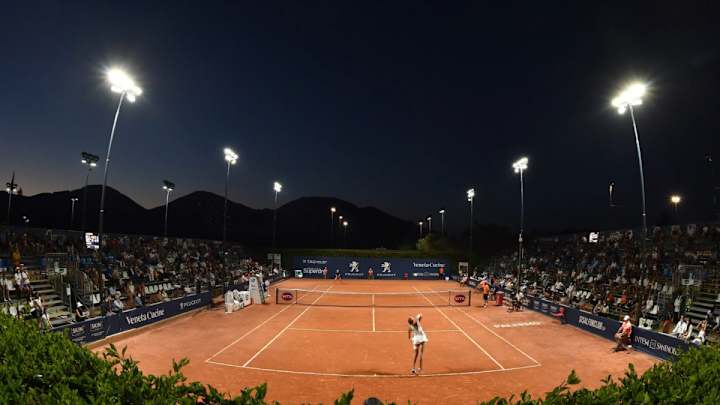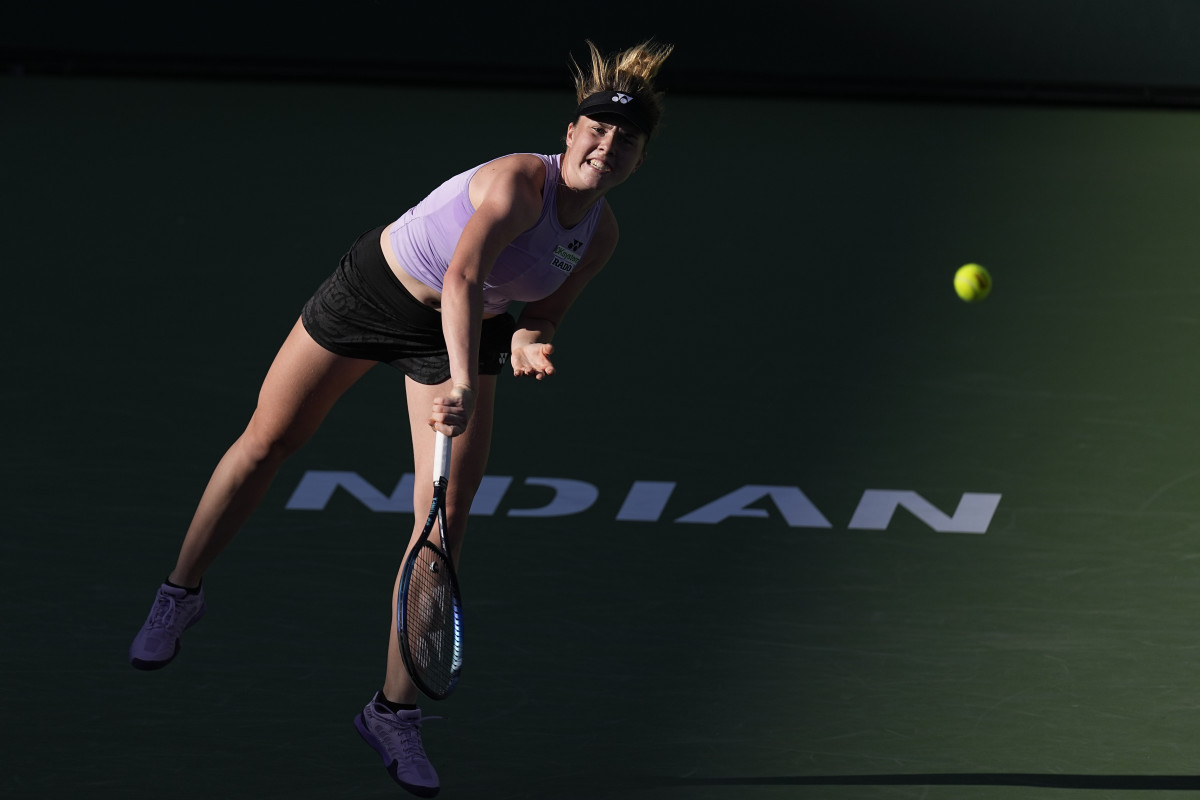Mailbag: Why a Recent WTA Private Equity Deal Isn’t Necessarily Bad for Women’s Tennis

While wishing every tournament had the vibe of Indian Wells, I dive into your latest emails.
Jon,
Can you help me understand the WTA/CVC deal that was announced today. I know you have written about it before, but what are we to think? Good deal or bad deal?
Phil
London
Lost in the Novak Djokovic/vaccine chatter and another Andy Murray marathon win, Bob Bryan’s Davis Cup captaincy announcement and play from Indian Wells, a tennis garden of earthly delights, the real news last week was the official announcement of the WTA’s “strategic partnership” with the private equity firm CVC Capital Partners and the “creation of a new commercial subsidiary named WTA Ventures.” For background, Chris Clarey of The New York Times wrote this comprehensive overview.
It’s easy to spin this as a win. In rough financial straits, missing players like Serena Williams, Naomi Osaka and Ash Barty, facing increasing competition, and without a real home for the year-end finals, the WTA received an infusion of $150 million. It did so by partnering with a credible outfit that has a track record (no pun intended) in sports, most notably Formula 1.
The deal comes as the WTA tries to avoid returning to China, an honorable stance but one that comes with a huge financial hit. The specific personnel involved on the CVC side come with rave reviews, inside and outside tennis. If surrendering some power, board seats and decision-making to seasoned financial types with outside perspective is a cost of doing business, that’s not necessarily a bad thing.
The concerns? No matter how it’s presented and what new “commercial subsidiaries” are created, the bottom line is the WTA did just part with 20 percent of its shop. Healthier businesses can raise capital without giving up this kind of equity and power. Women’s tennis is such a strong, if under-monetized, product. It’s global, young, healthy, unscripted, mobile, etc., but the rewards have long been redound to individual players, not necessarily the WTA. (Whose balance sheets look better: Osaka’s or the WTA’s?) Here’s another expression of that.
Also, the emphasis on using this investment to boost prize money is confusing, both from a business perspective and philosophically. WTA chairman and CEO Steve Simon told The New York Times: “Hopefully this partnership will allow us to begin addressing that valley between the commercial rights that we are able to secure and the rights that the men are able to secure.” Simon added that he hoped the new CVC partnership would lead to a near-term increase in prize money at tour events.

The majors already pay equal prize money, as they should. So now, you’re giving up 20 percent of the business, in part, so that the No. 25 or No. 50 or No. 75 player in the world can make the same wages as her male counterpart at run-of-the-mill tour events? That seems like a curious plan for long-term growth. For so long, the push for equal wages—and a reason many of us have been supportive—rested on the assumption that there was systemic inequality at play (see: Denis Shapovalov).
But wait. This deal implies that those controlling tennis’ pursestrings are not sexist, nor are events hoarding money at the expense of paying women fairly. But rather that the WTA/ATP pay gap is simply the market speaking. And the way it can be bridged is not by social pressure or leverage or negotiation, but by engaging outside partnership.
More optimistically, the deal’s emphasis on data, marketing and media is encouraging. As both tours lose star power and tennis becomes even more global, it’s essential to expand the profile and footprint of the sport, the WTA product, and the up-and-coming players. The media landscape has never been more unsettled, but also never been more open to creative dealmaking and opportunities. (Aside: Could the WTA devote, say, $2 million of the $150 million and make a punchier, more energetic version of Break Point?) We can save a debate about gambling—or “sports gaming;” whenever there’s a euphemism, you know immediately it’s controversial—for another time. But data and gambling partnerships are an obvious revenue stream and the guess is CVC can help here.
One question I would raise pertains to China. Does this $150 million infusion—and I’m told it’s coming gradually and not as one fat check—mean the WTA now has some cushion to stick to its principled stance? Or does a new partnership with a private equity investor—who got into this not as an act of altruism, but to make a return on investment—put pressure on the WTA to re-engage with China, a growth market and (at least pre-COVID-19 pandemic/Peng Shuai) the source of so much of its revenue? I am also curious whether the PTPA and noise about an organized player association had any impact here.
Is this a good deal? If you’ve been on earnings calls, you know that even the most brutal losses are spun as wins, even the most concerning news is cast as “courageously confronting the headwinds of a challenging marketplace.” And last week’s announcement was no different. A lot of champagne and backslaps and Proskauer fees. But, objectively, this could be very good for the WTA and, by extension, the sport. Much like a tennis match, we’ll have to see how it plays out. At some level, the scoreboard will tell all.
Jon,
It’s nearing six years since Denis Shapovalov's breakthrough as a 18-year-old at the Rogers Cup and five years since he broke into the top 25, yet he’s never gotten inside a #10 ranking, With a 5-5 record this year and an early exit at Indian Wells, he'll go into his next tournament no higher than 30th—his lowest since 2019. Shapovalov stock: buy or sell?
Rob
Yikes. I am thinking hold, depending on your strike price. Not sure I would buy, even if we are on a dip. He turns 24 next month and I wonder if, like water, he hasn’t settled to his natural level. He’s a flashy, fun-to-watch player with a big delta, able to beat players in the Top 10 and lose to players outside the Top 100. Not enough consistency to be a real Slam-winning threat. Too talented to write off.
Hey Jon,
Where is Sebi Korda? Does he still have a wrist issue? Any timetable?
Michelle
From Camp Korda: “Yes, we are being extra cautious with his wrist [injury], which was sustained during mid-match at the AO. The plan is to come back in Miami and if not, then Estoril. We will take it day by day and we want him to be 100-percent ready to play rather than risk anything further given he is only 22 years old. We are using the time to do extra fitness work, which is the silver lining of this cloud. We will see a stronger, faster Sebi when he plays again.”
Jon,
How do singles players without any significant ranking even get into Indian Wells doubles (too many for WCs)? I'm guessing Larry E pays them well to play, but aren't the ranked doubles players who don't get in mad?
spin4srv
Aside: Is there a less sexy phrase than “it’s a combination of factors” or “it’s a perfect storm” or “it’s a happy/harmonic convergent”? Oh, the seduction of singular causes and quick explanation. We want simple explanations, dammit!
Where were we?
Oh, right. The popularity of doubles at Indian Wells. It owes to … a combination of factors. Some of it is scheduling—an event that goes longer than a week, with the uncertainty of Miami (also longer than a week) approaching. Some of it owes to the mild conditions. You’re not going to suffer heatstroke (or wait out many rain delays) playing in the desert in March. Some of it owes to tradition. I’d like to think that some of it owes to a gratitude to Larry Ellison and desire on the players’ part to support the event.
Remember, players can enter doubles draws based on their singles rankings. I suppose a few doubles players are upset given that so many singles players enter. But most doubles players relish playing against singles stars—and the crowds they bring with them.
Overall, this is an endearing feature of Indian Wells and not a trendsetter. But how awesome would it be if every event had pairing like this (Tiafoe/Wawrinka? Ruud/Thiem? Shelton/Rune?) and this (Badosa/Rybakina? Andreescu/Putinseva?)
Jon,
I have been reading about LIV Golf and how it is challenging the PGA Tour (or not). Could something like this work in tennis?
Keith
Philly
I’d like to save a discussion of LIV Golf (or LIV Tennis) for next month. I have some thoughts and have spoken to some players, including Nick Kyrgios, about this. A preliminary point that is simply logistical: you can hold golf events on thousands of courses worldwide. You can hold one-off exhibitions on innumerable courts worldwide. But there is an (extremely) finite number of facilities that can accommodate a full-blown tennis tournament—say, a 64-draw event with room for a television compound, room for commodious player dining, corporate suites, hospitality, on-site workout facilities, etc. I have had this discussion with agents and finance types and the first response is often not about morality or economics but simply, “Where are you going to hold the tournaments?”
Jon,
I remember seeing that Hopman Cup is being relaunched, but haven’t heard much about it since. Do you know what the status is?
Nat
Montreal
Funny, I was talking to Alize Cornet last week (he says, name-droppingly) and this came up. As she winds down her career, she is thrilled that the Hopman Cup has a) been revived, and b) will be held at a home club of hers in Nice.
Yes, the Hopman Cup is back in 2023. It’s a bit of a “soft open.” Instead of attracting the best players to the sneaky cool city of Perth in the run-up to the Aussie Open, the new Hopman Cup will be played on clay—after Wimbledon and before the U.S. hardcourts in the south of France. This year, there will be six teams, that is, players from six countries. The committed players include Carlos Alcaraz and Andy Murray. (The French team, incidentally, will feature Cornet and Gasquet.) Iva Majoli is the tournament director. Here are more details.
